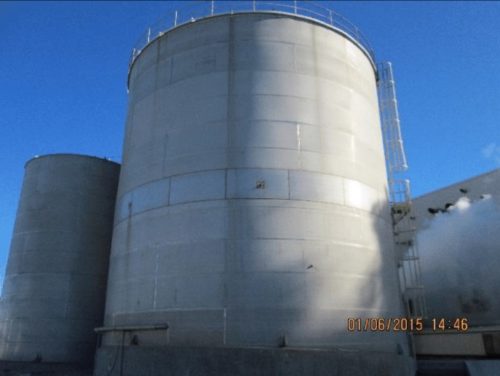When dealing with a mass of a single substance such as with storage tanks, it is essential the tank and the substance are actively in prime condition. This includes water tanks. Corrosion to water tanks or improper care can result in unsafe working environments and threatening health issues. Therefore, it is key water tanks be routinely inspected. Here are some requirements for water tank inspection:
 The water tank needs to be firmly anchored into the ground. A weak or imbalanced structure can spell doom to the tank and the important substance within it. The inspector should check things such as anchor bolts, roof trusses and weld seams. An extreme structure issue is unlikely; however, even small issues will worsen overtime if neglected.
The water tank needs to be firmly anchored into the ground. A weak or imbalanced structure can spell doom to the tank and the important substance within it. The inspector should check things such as anchor bolts, roof trusses and weld seams. An extreme structure issue is unlikely; however, even small issues will worsen overtime if neglected.
Sanitation is perhaps the most important of the required inspection aspects. Any unaccounted-for openings in the water tank can allow bugs, animals or other creatures or objects to enter. The inspector should look for roof openings, unhinged hatches, vents, etc. An important part of water tank inspection is to wash out the tank. This should be done at least every three years. Along with the washout, a dive-in or the use of a robot or submersible will enable a thorough look and helpful feedback. Most submersibles or robots now have built in cameras and infrared technology that help detect leaks and give workers a close-up look at the inside of the tank.
The general coating of the structure can be telling of any issues within the tank. Coating is a protective layer to the tank; thus, it needs to be free from blemish. Rust is an obvious sign. Rust stems from a combination of metal and water. A rusted water tank means water has found a way to get through to the surface. This can be a sign of a leak. Needless to say, the coating needs to be re-done once a thorough inspection is complete. The inspector must find the root of the problems before re-coating.
Of course, worker safety is very high on the water tank inspection list. Features of a water tank like ladders, footing and overall structure must be safe. Any indications of weakness call for repair or replacement. If the tank is high off the ground, there should be a place for flex cables to anchor in order to support any workers who climb or scale the water tank. Safety first!
Ultimately, water tanks should be inspected at least once every three years. That is a good basis, though all companies should abide by the recommendations or mandates of the OSHA (Occupational Safety and Health Administration and AWWA (American Water Works Association). It would be a good idea to get in touch with a representative of either or both prior to carrying out a water tank inspection.
Frazier Reliability Solutions serves to help companies execute safe and precise inspections. Our innovative equipment consists of submersibles, drones, infrared thermology and so much more. To keep your manufacturing or industrial equipment safe and functional, contact Frazier Reliability Solutions today! Also, please visit our blog for additional helpful information.